Is a smart thermostat right for you?
Select is editorially independent. Our editors selected these deals and items because we think you will enjoy them at these prices. If you purchase something through our links, we may earn a commission. Pricing and availability are accurate as of publish time.
If you're looking to upgrade your home with smart devices, it's worth considering a smart thermostat in the winter months, when high heating bills and air quality become a concern. And with new products frequently hitting the market, there are plenty of devices to choose from: In September 2021, for instance, Amazon announced a slew of new smart home devices, one of which is the Amazon Smart Thermostat, designed with Honeywell technology. In mid-2022, an endeavor known as Matter is expected to connect all of your smart devices, regardless of who makes them.
SKIP AHEAD Best smart thermostats
Smart thermostats work with smartphone apps so that you can be on your way to the airport and still dial down your central heating, conserving energy when you’re not around. But some of the biggest savings roll in during everyday use: You can program specific times for the thermostat to automatically set back heating or cooling while you’re away or at work and also when you’re asleep. Advanced thermostat models will learn your schedule over time to automatically set optimal temperatures while minimizing energy consumption. But with various thermostats options out there, which is the right one for you? We consulted technology and energy experts to suss out the best smart thermostats to shop.
Learning thermostats versus manual thermostats
The first thing you’ll want to decide is how you plan to program your smart thermostat. After all, you may be content with an internet-connected, manual thermostat. The Honeywell Home Programmable Thermostat, for example, allows you to set temperatures using an app over Wi-Fi and is relatively more affordable than the smart thermostats we’ll be describing below.
If you want more of a hands-off experience, a smart thermostat might be a better option for you. This type of Wi-Fi-enabled device “can automatically adjust heating and cooling temperature settings for optimal performance,” explained Tim Carroll, deputy press secretary for the U.S. Environmental Protection Agency. He also noted that many of these thermostats offer geofencing, “which allows your smart thermostat to know when you’re on the way home and automatically adjusts your home’s temperature to your liking.”
In contrast to a manual thermostat, learning thermostats are more costly, often clocking in at more than $200. And while some are more DIY-friendly to connect to your home’s electrical wiring, others may require professional installation.
The best smart thermostats in 2022
Since we don’t test smart thermostats ourselves, we rely on expert guidance and recommendations to guide our recommendations. The experts we spoke to agreed that the best smart thermostats are certified by Energy Star — in order to receive that certification, the thermostats are “independently certified, based on actual field data to deliver energy savings,” according to Carroll. Below, we rounded up highly rated smart thermostats, all of which have earned the Energy Star label.
Honeywell Home T9 Wi-Fi Smart Thermostat
If you live in an older home without a C-wire, that’s not a dealbreaker for the T9: It comes with a C-wire power adapter that you can install alongside the thermostat. (More on C-wires below.) It uses occupancy, humidity and temperature to regulate the indoor climate, while an automatic changeover mode automatically switches between heating and cooling systems. “The ability to detect occupancy in the home is key to the savings potential of Energy Star certified smart thermostats,” Carroll explained. “Certified smart thermostats will use an occupancy detector to figure out if the home is vacant. If no one is home, the smart thermostat will raise or lower the temperature setting so the heating/cooling system runs less, saving energy.”“
The thermostat supports additional remote sensors, which have a 200-foot range and can detect the temperature, occupancy and humidity in different rooms to help control heating and cooling. A seven-day heating schedule can be manually programmed to turn on and off, or you can allow the system to automatically kick-start systems when it detects your smartphone approaching.
Honeywell Home T9 Wi-Fi Smart Thermostat

Honeywell Home T9 Wi-Fi Smart Thermostat $142.50 at Amazon
Honeywell Home T9 Wi-Fi Smart Thermostat $179.99 at Best Buy
ecobee Smart Thermostat With Voice Control
If you’re after something with all the bells and whistles, ecobee’s latest learning thermostat offers a ton of features in a sleek glass touch-sensitive ovoid. Built-in Alexa means it can act as a smart home hub on top of a thermostat. You can use voice commands to order the thermostat to turn up the heat or control other Alexa-enabled devices like smart lights or a video doorbell, as well as make calls and read messages. Support for Spotify and other streaming services — plus a built-in speaker — allow you to use it like any other fully functioning smart assistant device.
The thermostat’s built-in humidity sensor help it set energy-saving temperatures, working on the assumption that a drier atmosphere is cooler. It also comes with a remote temperature and occupancy sensor with a 60-foot range. If you’re relying on time-of-use energy, the ecobee can automatically preheat or pre-cool the home during off-peak times, helping reduce how much you spend on electricity, according to the brand. Vacation and auto changeover modes boost energy efficiency when you’re out of town or during changing seasons.
ecobee Smart Thermostat With Voice Control
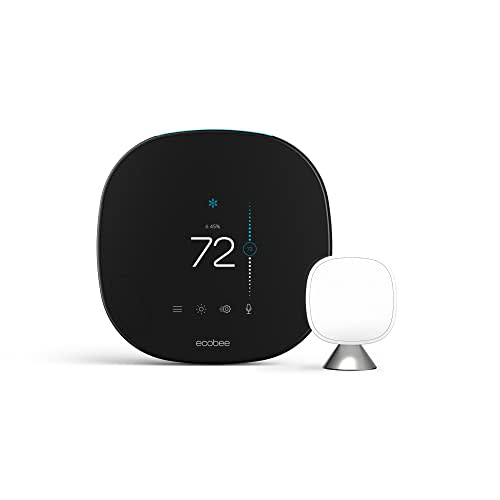
ecobee Smart Thermostat With Voice Control $184.99 at Walmart
ecobee Smart Thermostat With Voice Control $249.00 at Amazon
ecobee Smart Thermostat With Voice Control $249.99 at Best Buy
Google Nest Learning Thermostat, 3rd Generation
For a sleeker addition to the home, consider the Nest Learning Thermostat, which has a circular glass face in a stainless steel casing and comes in seven colors. Along with smart learning capabilities and humidity sensors, its built-in activity sensor detects when people are home to adjust heating accordingly. Its display also comes to life when someone enters the room to show temperature or time. External sensors — available separately for $39, or $95 for a three-pack — detect temperature, allowing you to create heating zones for consistent temperatures or to save energy in empty rooms. The Nest can be scheduled to heat or cool in low-demand times when energy costs less to answer the demands of time-of-use subscribers. And for those planning on evolving their smart homes further, there’s a whole range of Nest devices guaranteed to play nice.
Google Nest Learning Thermostat, 3rd Generation
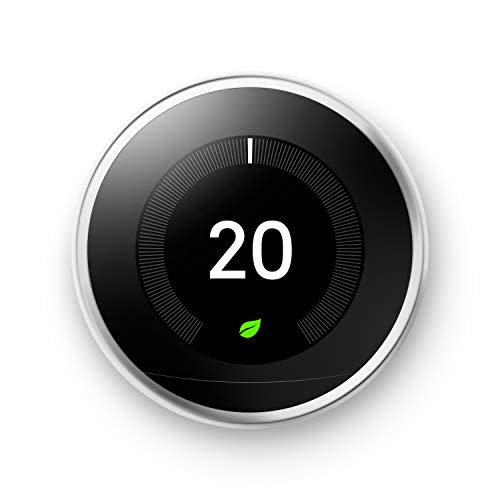
Google Nest Learning Thermostat, 3rd Generation $221.00 at Amazon
Google Nest Learning Thermostat, 3rd Generation $249.99 at Best Buy
Google Nest Learning Thermostat, 3rd Generation $208.00 at Walmart
Google Nest Smart Thermostat E
For smaller homes, this budget-friendly take on the Nest is a good option. Though its display is plastic and simply shows the current temperature when someone enters the room, its learning capabilities match those of the regular Google Nest. If it’s humid indoors, the Nest E can also activate the air conditioning for cooler, drier air. Like the Nest, it sends smartphone alerts for sudden temperature changes, along with monthly energy usage reports. Compared to the regular Nest, the Nest E supports fewer home setups, so triple check your space’s compatibility before ordering this one.
Nest Thermostat E
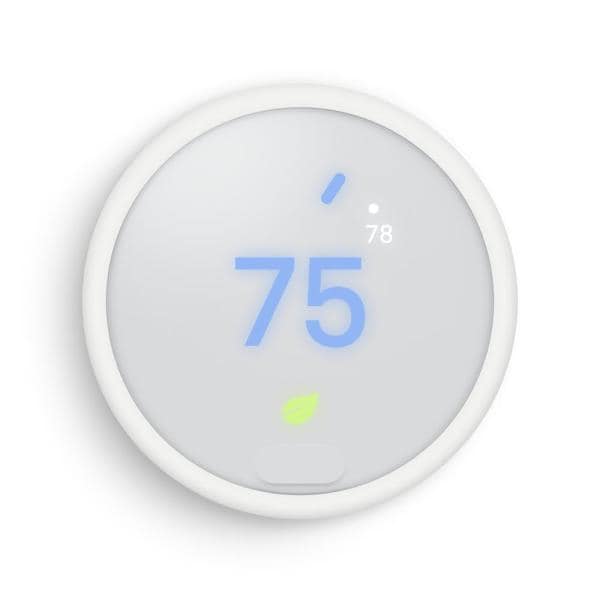
Nest Thermostat E $169.00 at Home Depot
Nest Thermostat E $143.29 at Walmart
ecobee3 lite Smart Thermostat
Another learning thermostat that’s great for smaller homes as a standalone unit, the ecobee3 lite supports remote sensors that detect occupancy as well as temperature, allowing it to automatically turn off heating or cooling in empty rooms. Like the Nest E, it can work with air conditioning to lower indoor humidity in the absence of a dehumidifier, while monthly reports show energy use compared to neighbors. Where the Nest E works with Amazon, Google and Samsung smart home systems, the ecobee3 lite additionally integrates with Apple’s HomeKit.
ecobee3 lite Smart Thermostat
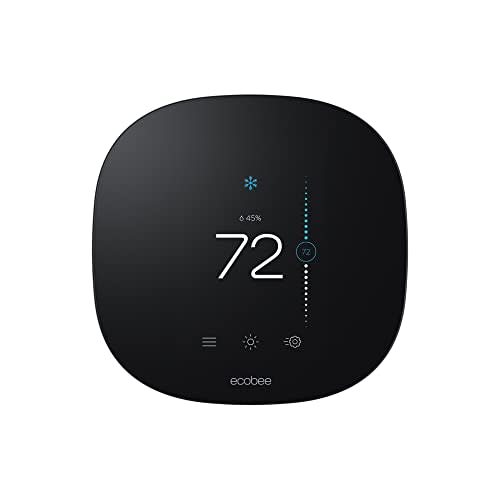
ecobee3 lite Smart Thermostat $149.35 at Amazon
ecobee3 lite Smart Thermostat $179.00 at Home Depot
Amazon Smart Thermostat
Introduced by Amazon at its fall 2021 event, the Amazon Smart Thermostat is a relatively simple and affordable option for those looking to conserve energy. Built in conjunction with Honeywell, the thermostat can be controlled with any Amazon Alexa device, and you can also program it through the Alexa app from anywhere. It requires either a C-wire or a C-wire power adapter for installation.
Amazon Smart Thermostat
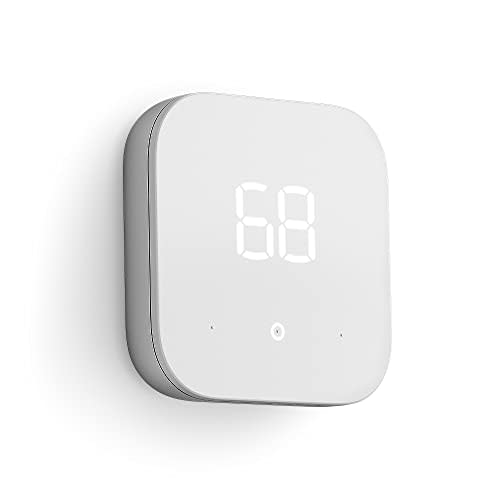
Amazon Smart Thermostat $59.99 at Amazon
What to look for when buying a smart thermostat
Though most smart thermostats sport a similar interactive design, there are still some things you need to consider when shopping for one. On top of potential monetary savings, you also need to consider the device’s compatibility with your current smart home devices, as well as your home energy system setup.
Potential for electric bill savings
According to Carroll, any smart thermostat with an Energy Star certification has been independently certified with “a full year’s worth of anonymized and aggregated real-world data” to provide energy savings, thereby saving money on heating and cooling bills. “The more you spend on heating and cooling, the more you could save with an Energy Star-certified smart thermostat,” he noted. “Homes with high heating and cooling bills can save up to $100 a year.”
Reach and connectivity
If you live in a larger home, look for a thermostat with remote sensors. “Remote occupancy sensors help set more accurate temperatures in different zones of the house,” explained Mitchell Klein, executive director of Z-Wave Alliance, a consortium of smart device companies.. “Say no one’s downstairs after 8 p.m. — you can de-prioritize that zone for heating, which saves you energy while keeping your environment comfortable.”
Smart thermostat home compatibility
It’s important to note that not every smart thermostat works with every other smart home device. As of right now, all you need to worry about is checking the compatibility of your preferred smart thermostat with whichever major smart home system you use, be it from Amazon, Google, Apple, Samsung or otherwise. “Any of the popular, well-known brands are now focused on building a universal smart home ecosystem,” Klein explained.
How to install a smart thermostat
Always check on the thermostat brand’s site that it supports your home energy system — look for the thermostat’s requirements or compatibility sections. More complex home heating and cooling systems — such as multistage boilers and heat pumps or dual-fuel systems — may require a more advanced smart thermostat that supports a wider range of heating types. Electric resistance systems, for instance, are only supported by a few thermostats.
You’ll also need to check for a C-wire, the so-called “common” wire segment of some thermostat wiring systems that provides consistent power to a smart thermostat for its Wi-Fi connection and digital display. According to Carroll, many older homes aren’t designed for C-wires, since older thermostats don’t need them. “For smart thermostats that do require a C-wire, you can generally put an extra small device by your heat pump or furnace that will make up for it — but then you need to run another wire parallel to the current thermostat wires,” he explained. “Most homeowners will want to ask an HVAC technician or electrician for help with this.”
Catch up on Select’s in-depth coverage of personal finance, tech and tools, wellness and more, and follow us on Facebook, Instagram and Twitter to stay up to date.
